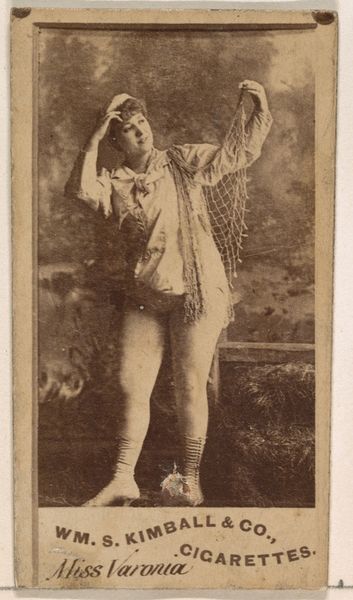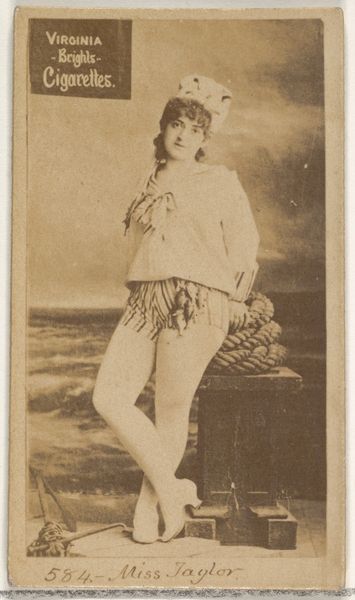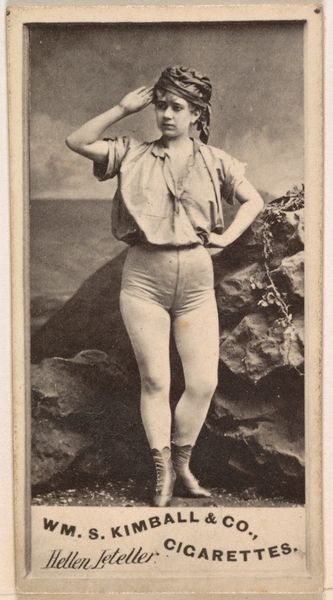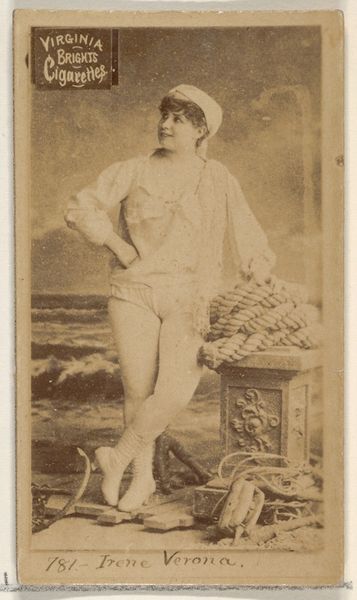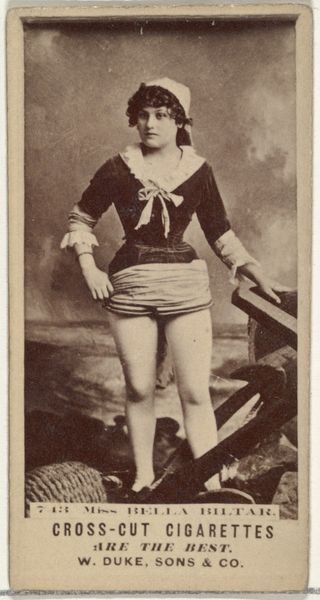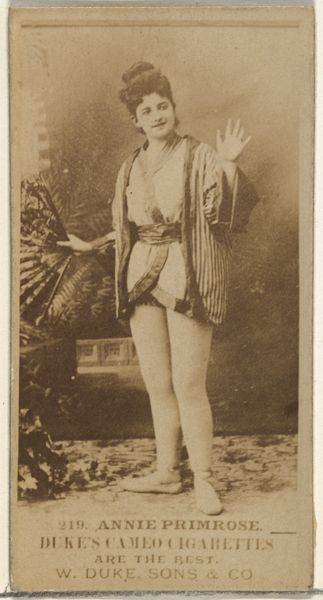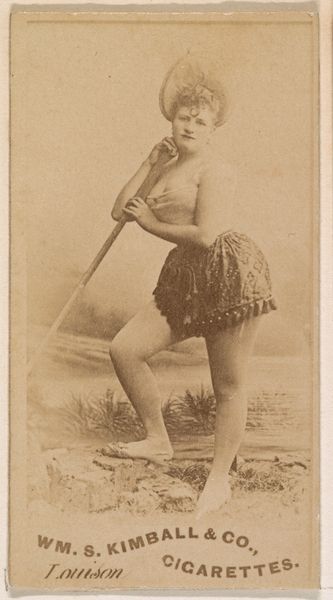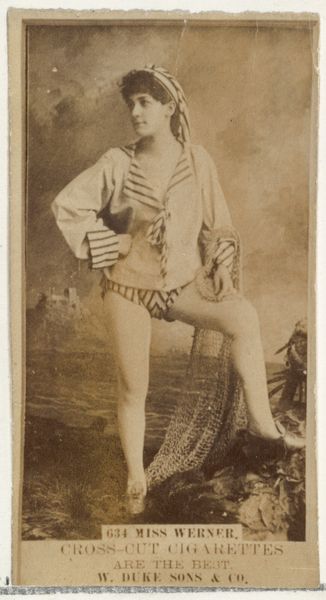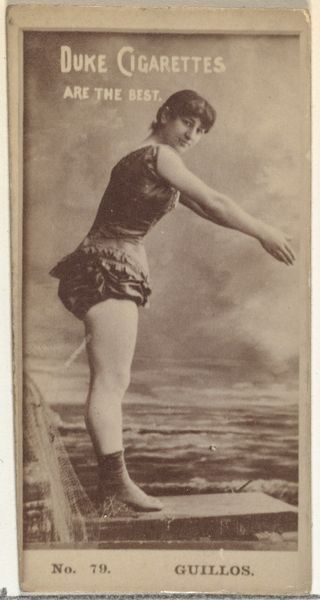
Card 818, Miss Taylor, from the Actors and Actresses series (N45, Type 2) for Virginia Brights Cigarettes 1885 - 1891
0:00
0:00
drawing, print, photography
#
portrait
#
drawing
#
aged paper
#
toned paper
# print
#
figuration
#
photography
#
men
#
genre-painting
Dimensions: Sheet: 2 3/4 x 1 3/8 in. (7 x 3.5 cm)
Copyright: Public Domain
Curator: What strikes me most is the dreamy sepia tone of this small card, almost like a memory caught in amber. Editor: Exactly. What we are viewing is a card, dating from around 1885 to 1891, produced by Allen & Ginter, a prominent cigarette manufacturer. It's part of their "Actors and Actresses" series, featuring Miss Taylor, and was packaged with Virginia Brights Cigarettes. Curator: So it's essentially an advertisement using a popular figure. The print is adhered to card stock. I’m curious about how these images impacted ideas of celebrity at the time and how gender plays into marketing cigarettes, if Miss Taylor has some sort of role, that seems significant. Editor: Absolutely. Consider the material culture here—cheap paper, mass production. Cigarettes were becoming increasingly popular, particularly among the working class. By linking their brand to beauty, fame, and entertainment, they were tapping into aspirations of social mobility. The image suggests a playful innocence, even sex appeal, marketing an addictive product. Curator: And in that appeal, you see an idealised, romanticized image of women on stage – performers who become these fantasies for both men and women. I am immediately concerned with who Miss Taylor actually was and how well her own interests are represented. The cost of such labor seems easily exploitative. Editor: Precisely, this tension underscores broader cultural anxieties about the changing roles of women in public life and the commodification of beauty and talent in this era. I wonder about her own agency within the confines of the theatre industry. Did she see any royalties or residuals when the manufacturer sold her likeness to the consumer? Curator: Such ephemera offer rich ground for analyzing social constructions of identity, class, gender. Even the "toned paper," hints to this object's long life beyond its use as consumer-packaged goods. Editor: Yes, what once might have been casually tossed away has now become a valuable cultural artifact. The study of mass media allows us to question broader assumptions of identity formation as Miss Taylor looks towards her audiences through her hand-placed shade. Curator: So much contained within a tiny card—a miniature window into the past, sparking big conversations today. Editor: It's a reminder of how seemingly insignificant objects can reveal so much about power dynamics, social structures, and cultural values.
Comments
No comments
Be the first to comment and join the conversation on the ultimate creative platform.
